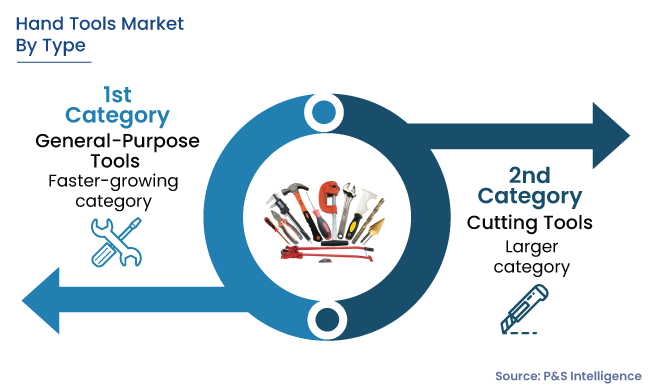Hand Tools Market Analysis
In 2024, the global hand tools market is estimated to have valued at about USD 17.0 billion, and by 2030, it is expected to reach around USD 24.4 billion. This growth, with a CAGR of 6.2% from 2024 to 2030, is largely driven by the bustling construction, shipbuilding, automotive, and manufacturing sectors. These implements are used for everything from drilling to hammering and sawing in applications ranging from DIY home improvement to aerospace.
These common pieces of equipment are used for a variety of tasks, such as gardening, farming, and framing. Due to their manual nature, they are only appropriate for a limited number of activities. The global hand tools market dynamics are influenced by the building industry's rebound post the pandemic, quick industrialization, rising infrastructure spending, and economic stability in LATAM. This market is further influenced by the growth of the machinery and equipment manufacturing industries.
Further, while power tools enhance productivity and efficiency, their relatively higher costs dissuade many DIY enthusiasts and small contractors in emerging economies from purchasing them. Therefore, hand tools have gained popularity due to their affordability compared to power tools.
For many businesses in the hand tools industry, sustainability is starting to matter. In response to the consumer demand for sustainable and environment-friendly products, manufacturers are creating tools with longer lifespans, simpler recycling at the end of their lives, and recycled components.
Hand tools are strongly associated with building and industrial activities. The prevailing economic conditions significantly impact the construction and manufacturing industries, in turn, propelling the demand for hand tools.
Specialized hand tools become even more necessary during periods of economic progress, which brings with it new building initiatives and greater industrial production. Industries majorly demand these instruments since they are used for jobs requiring accuracy and efficiency.
The need for hand tools varies with economic cycles, with prosperous times leading to increased demand because of larger building and industrial projects that require specialized equipment.
Cutting, sawing, and other construction activities can be performed easily with hand tools. Because of recent technology advancements, hand tools are now more productive and less physically taxing on the user.
Hand tools are more common in the construction industry since they save laborers time in their respective applications. A range of hammers, wrenches, screwdrivers, and other items are available, and they are lightweight, portable, and capable of completing tasks more quickly.





